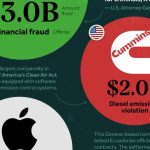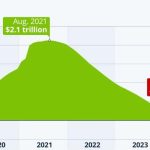For the past three years, as the United States – like many other nations – battled with elevated inflation, consumer spending has remained remarkably robust, keeping the U.S. economy from sliding into a recession.
However, as Statista’s Felix Richter reports, that has come at the expense of personal saving, which dropped sharply in 2022, when the personal saving rate, i.e. the share of their disposable income that people weren’t spending on consumption, taxes or interest payments, dropped to the lowest level since the financial crisis.
You will find more infographics at Statista
During the pandemic, when generous stimulus checks met limited consumption possibilities, Americans had saved more money than ever before, with the personal saving rate peaking at 32 percent in April 2020 and remaining above the pre-pandemic trend until the end of 2021.
That’s when inflation started to bite, and people started utilizing these excess savings to support their spending.
According to calculations made by economists at the San Francisco Fed, American households accumulated $2.1 trillion in excess savings between March 2020 and August 2021, that is they saved $2.1 trillion more than they would have been expected to based on the pre-pandemic trend of personal saving. In September 2021, people began saving less than they would have been expected to, meaning those excess savings were gradually drawn down. Three inflation-plagued years later, Americans have burned through those excess savings, and then some.
At the end of September 2024, Americans had collectively saved $291 billion less since March 2020 than they would have been projected to if the pandemic had never happened.
Loading…











